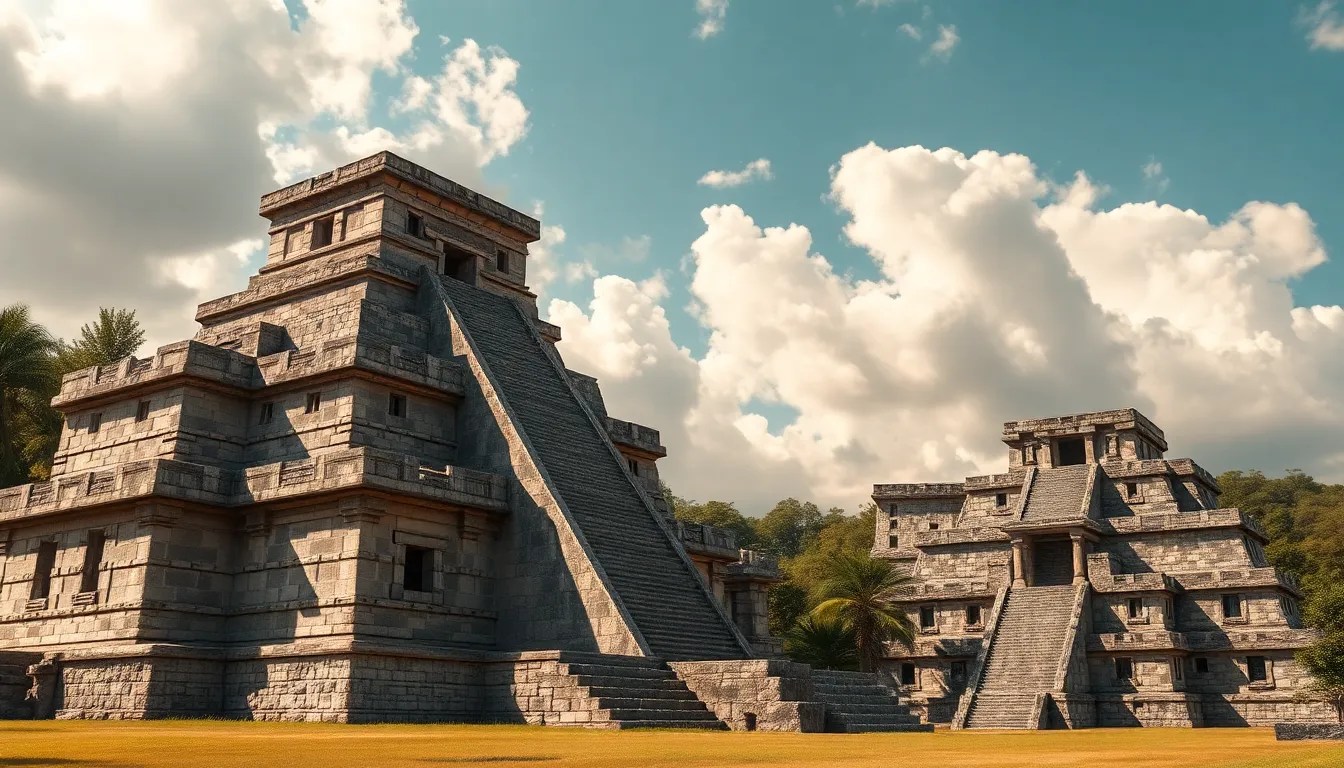Mayan Myths and Their Influence on Ancient Architecture
I. Introduction
Mayan mythology is a rich tapestry of stories and beliefs that served to explain the world around the ancient Maya civilization. These myths not only shaped their cultural identity but also intricately influenced their architectural practices. The Maya viewed architecture as a physical manifestation of their cosmology and beliefs, making it essential to their way of life.
This article explores the connection between Mayan myths and architectural practices, examining how these narratives shaped sacred spaces, urban planning, and the overall cultural landscape of the Maya civilization.
II. Key Themes in Mayan Myths
To understand the influence of Mayan mythology on architecture, it is crucial to identify the key themes within these myths:
- Creation stories and cosmology: The Maya had various creation myths that detailed the origins of the world, the gods, and humanity. These narratives often emphasized the cyclical nature of time and the importance of life, death, and rebirth.
- The role of gods and supernatural beings: The pantheon of gods, such as Itzamna, Kukulkan, and Chaac, played significant roles in Mayan life and architecture. Each deity embodied various natural elements and phenomena, influencing the design of temples and other structures.
- Symbolism of natural elements in mythology: Elements such as maize, the jaguar, and the serpent were integral to Mayan mythology and found their way into architectural motifs, reflecting the deep connection between the natural world and spiritual beliefs.
III. Architectural Manifestations of Mayan Myths
The beliefs and narratives of the Maya were not merely abstract ideas; they were translated into the physical realm through architecture. Key architectural manifestations include:
- Sacred sites and their mythological significance: Cities were often constructed around sacred landscapes, with temples and plazas designed to honor the gods and serve as sites for rituals.
- Temples as representations of divine connection: The towering structures, such as pyramids, served as a bridge between the earth and the heavens, emphasizing the Maya’s understanding of their place in the universe.
- Use of specific symbols and motifs in construction: Carvings, murals, and architectural elements often depicted mythological themes, reinforcing the narratives central to Mayan culture.
IV. Case Study: The Temple of Kukulkan
The Temple of Kukulkan, also known as El Castillo, is one of the most iconic structures of the Maya civilization, located in Chichen Itza. Its historical context is profound, as it served as a center for worship and astronomical observation.
The myth of Kukulkan, the feathered serpent deity, reflects themes of renewal and the cyclical nature of life. This myth is intricately linked to the temple’s design, which features a unique architectural layout that aligns with celestial events.
One remarkable aspect of the temple is its astronomical alignment. During the equinoxes, shadows cast by the temple create the illusion of a serpent slithering down its steps, symbolizing Kukulkan’s descent to earth. This alignment demonstrates the integration of mythology and astronomy into the architectural practices of the Maya.
V. The Role of Rituals in Mayan Architecture
Rituals played a crucial role in shaping Mayan architecture, influencing not only the design of buildings but also the overall urban layout:
- How rituals influenced architectural design: Structures were often designed with specific rituals in mind, incorporating altars, ceremonial platforms, and spaces for gatherings.
- The integration of ceremonial spaces within urban planning: Cities were organized around central plazas where rituals could take place, emphasizing the communal aspect of worship.
- Examples of ritualistic architecture: Notable examples include the ball courts, which were integral to the Mesoamerican ballgame, and temples with ritual significance, such as the Temple of the Inscriptions in Palenque.
VI. The Influence of Myths on Urban Layout
The layout of Mayan cities often reflected mythological narratives, influencing not only the arrangement of buildings but also the overall design of urban spaces:
- City planning based on mythological narratives: Cities like Tikal and Palenque were arranged in ways that honored the gods and reflected the cosmos, with structures strategically positioned to align with significant celestial events.
- The arrangement of structures in relation to mythic stories: Buildings were often placed to represent various elements of creation stories, symbolizing the connection between the physical and spiritual worlds.
- Case studies of notable Mayan cities: Tikal, with its grand pyramids and temples, exemplifies how urban design was influenced by mythology, while Palenque showcases elaborate carvings that narrate the stories of gods and rulers.
VII. The Legacy of Mayan Myths in Modern Architecture
The influence of Mayan mythology extends into contemporary architecture, reflecting the enduring significance of these ancient stories:
- Contemporary interpretations of Mayan architectural styles: Modern architects often draw inspiration from the geometric forms and monumental scale of ancient Mayan structures, integrating these elements into their designs.
- Preservation of mythological themes in modern design: Many cultural centers and museums incorporate motifs and themes from Mayan mythology, helping to keep these narratives alive.
- The impact on cultural identity and tourism: The fascination with Mayan myths and architecture continues to attract tourists, contributing to cultural preservation and a deeper understanding of the Mayan heritage.
VIII. Conclusion
The relationship between Mayan myths and architecture is a testament to the deep cultural heritage of the Maya civilization. These stories not only shaped the physical structures that stand as monuments to their society but also influenced the very fabric of their daily lives and spiritual practices.
The enduring significance of these myths continues to resonate today, offering insights into the beliefs and values of an ancient civilization. As we explore the rich narratives of Mayan mythology and their architectural expressions, we gain a greater appreciation for the complexities of this remarkable culture.
We invite you to delve deeper into the fascinating world of Mayan mythology and architecture, discovering the stories and structures that continue to inspire and intrigue.



